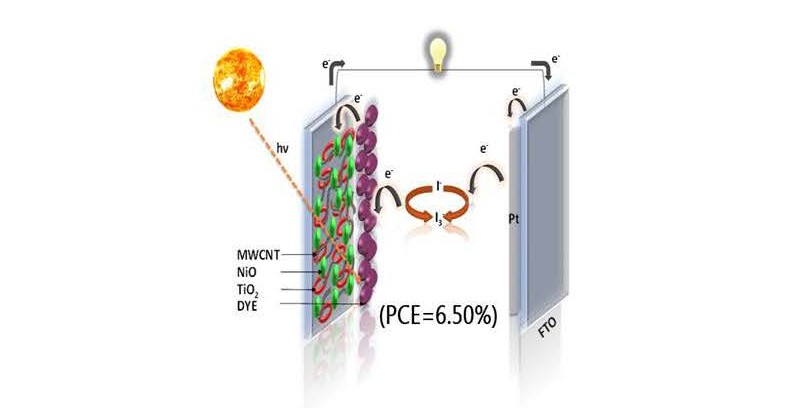Abstract
In this study, we systematically investigated the influence of various carbon allotropes on the photovoltaic performance of p-type dye-sensitized solar cells (DSSCs) using nickel oxide (NiO) nanotubes as the base semiconductor. The selected carbon nanostructures multi-walled carbon nanotubes (MWCNTs), reduced graphene oxide (RGO), graphene quantum dots (GQDs), and fullerenes (C60) were integrated with NiO and evaluated based on their structural and electrochemical characteristics. The resulting NiO-based nanohybrids exhibited a trend in power conversion efficiency (PCE) as follows: NiO@GQD (NG) < NiO@C60 (NF) < NiO@RGO (NR) < NiO@f-MWCNT (NM), with PCE values of 0.55%, 0.60%, 0.72%, and 0.80%, respectively. Among all NM nanohybrids exhibited the highest performance, with a short-circuit current density (Jsc) of 2.53 mA cm-2, an open-circuit voltage (Voc) of 0.56 V, and a fill factor (FF) of 56.46%. The superior performance of the NM device is attributed to enhanced dye adsorption and efficient charge transfer facilitated by the functionalized MWCNT network. To further explore its potential, the NM nanohybrid was strategically incorporated into an n-type DSSC by integrating it with a TiO2 active layer. This ternary NiO@f-MWCNT/TiO2 composite was synthesized with varying MWCNT loadings (10–50 wt %). The TiO2+NM20 photoanode exhibited the highest PCE of 6.50%, marking a 34% improvement over the bare TiO2 device. This enhancement is credited to improved light absorption, reduced internal resistance, and the excellent charge transport properties.

Keywords
NiO, Nanohybrids, p- type, DSSC, Nanomaterial
